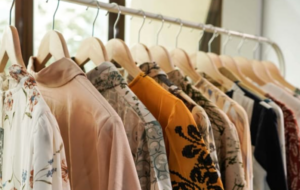
|
Getting your Trinity Audio player ready...
|
The technology and fashion industry collaborate seamlessly, fusing innovation and style to shape the future of wearable experiences. Fashion is the style or styles of clothing and accessories worn at any given time by groups of people. In the fashion industry, technology is reshaping the fashion industry in designing, manufacturing, distributing, and marketing products. Brands are using 3D printing, and virtual reality in the fashion industry. This article will explain more about the role of technology in the fashion industry.

Technology Helps in Product Design
Technology is helping brands to create new designs quicker and more efficiently. This is being done by collecting information about user preferences and interests. An example is that of Amazon. It created an AI designer that utilizes machine learning to notice and track fashion trends. Another example is subscription startup Stitch Fix which uses AI algorithms to analyze current trends and t offer new designs based on consumer data. This company employs 85 data scientists who work on perfecting AI technology.
Technology Helps in the Manufacturing of Clothes
To begin with, statistically, around 12.8 million tons of clothing are sent to landfills annually. Statistics further review that the fashion industry is responsible for up to 10% of global CO2 emissions, 20% of the world’s industrial wastewater, 24% of insecticides, and 11% of pesticides used. Big brands in the fashion industry have announced new clothing lines focused on sustainable fashion. Among them are H&M’s Conscious Collection, Adidas, and Levi’s Wellthread x Outerknown collection which helps in the manufacturing of clothes. Plenty of technologies are being invented to make sustainable production more feasible and cost-effective. For example, Tommy Hilfiger is redesigning design, manufacturing, and distribution systems to meet customer demand on time. Their manufacturing and design time has been reduced from 18 to 6 months. It enabled them to keep up with the fast-fashion demand as well as to create new eco-friendly practices.
New Fashion Innovations are Helping in Printing
Furthermore, 3D printing is another big trend in the clothing, shoes, and accessories industry. Fashion designers are exploring technology and searching for different ways of helping them to produce customized goods tailored to specific consumers. Brands like New Balance, Nike, Reebok, and others are using 3D printing technologies for customization purposes.
Technology Helps in Inventory and Distribution
Additionally, the fashion industry is increasingly using a combination of sensors, scanners, and cloud-based software to manage inventory. Another technology used by brands in the fashion industry is Radio frequency identification technology. Radio Frequency Identification Technology tags make stores more efficient and also improve inventory accuracy and item availability. This helps to reduce out-of-stock time and leads to sales increases. An example of a brand using Radio Frequency Identification Technology is Zara. Its employees used to spend 40 hours scanning barcodes and can now use the technology to log inventory in about 5 hours.
Technology Helps in the Distribution Channels
Moreover, in the fashion industry, subscription boxes are one of the new ways of distribution for fashion companies. The recommendation algorithms improve over time as subscribers share information about their preferences and give feedback on items they want or do not want to buy. The use of subscription boxes helps fashion designers get their goods in front of specific groups of consumers and collect an enormous amount of information about them. This enables brands to use technologies like AI to develop new products and meet consumer demand.
Virtual Reality Technology Improves the Fashion Industry
Furthermore, virtual reality technologies are increasingly being deployed to create digital experiences. This technology is helping brands to create engaging and exciting shopping experiences. The advantage of virtual reality is that it increases conversion rates by letting online shoppers experience products in 3D. It also creates augmented experiences like an AR pop-up, interactive catalog, or VR recreation of a store.
Technology and Digital Stylists
Technology is helping digital stylists to give feedback on outfit choices or suggest alternations. Many fashion companies are using chatbots designed to provide a personalized and interactive shopping experience. This method of customer service can help retailers save money on customer service staff while building customer loyalty.
3D Printing in the Fashion Industry
3D printing is also about sustainable fashion. Research reviews that 3D printing reduces fabric waste in production by about 35%. 3D printing helps to create zero-waste sustainable production for many brands.
Conclusion
In conclusion, many fashion companies and brands are using technology to manufacture, and print their products and to communicate with their customers. This has increasingly made the fashion industry more advanced while improving their services. Fashion companies are now using various technologies like 3D printing as well as virtual reality.
